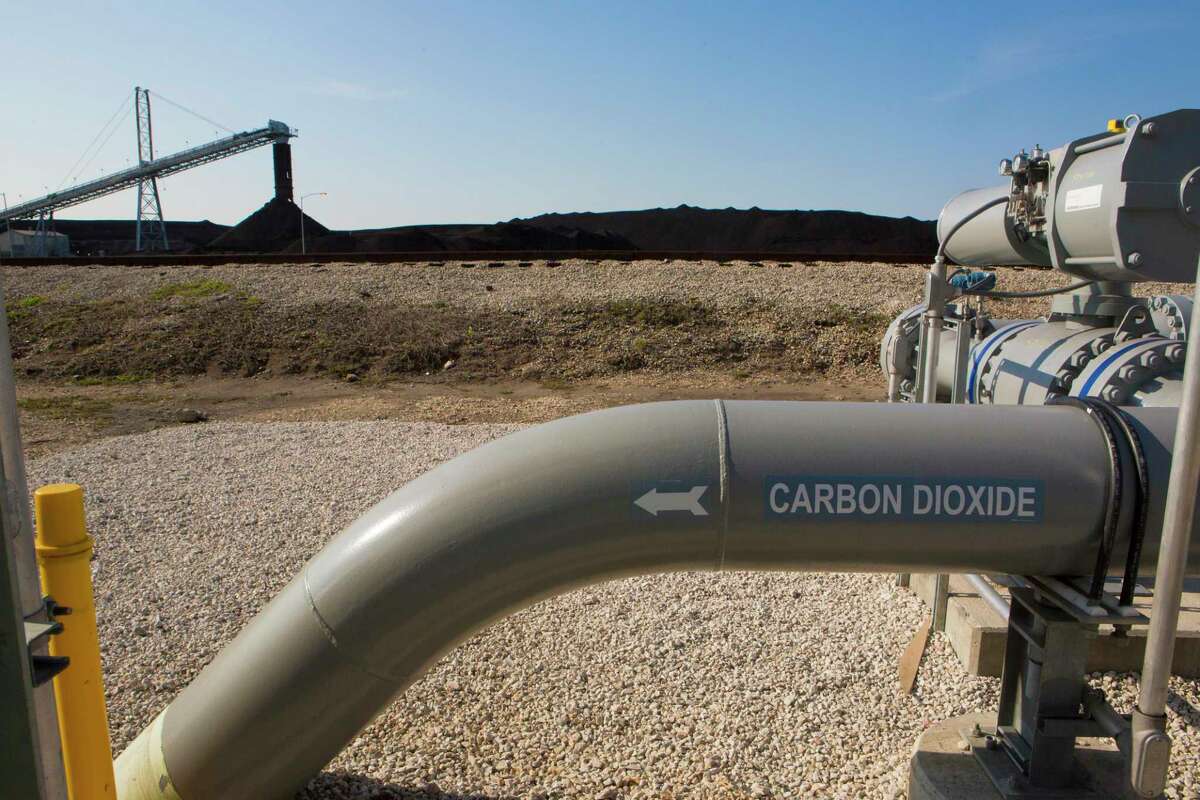The oil and gas industry is slated to be a big beneficiary of carbon capture tax credits present in the recently passed Inflation Reduction Act.
Talking about carbon capture projects used to be a bit more theoretical.
Sure, polluting companies would say, we would love to deploy this technology on a large scale, but the funding isn’t there. To make it plausible, many argued, carbon capture would need financial support from the government.
Enter the most significant climate change legislation to date, which Congress passed in August. Known as the Inflation Reduction Act, it increases the tax credit for capturing and storing carbon by 70 percent to as much as $85 per ton.
“This legislation, coupled with the groundbreaking carbon management provisions included in the bipartisan infrastructure law (passed last year), could deliver an estimated 13-fold increase in deployment of carbon management technologies and between 210 and 250 million metric tons of annual emissions reductions by 2035,” Madelyn Morrison, a spokeswoman for the industry group Carbon Capture Coalition, said in a statement.
While carbon capture projects would largely be attached to big industrial plants — think cement manufacturers or electricity generators — it’s oil and gas companies that are developing the technology to sell to other industries with a carbon emissions problem (and, in some cases, to use in their own operations).
But there’s still a big mismatch between the projects coming online and what scientists say is needed to keep global warming to 1.5 degrees Celsius above pre-industrial levels and avoid the worst effects of climate change. Essentially, we need a whole lot more carbon capture, and a whole lot less oil and gas use.
The Intergovernmental Panel on Climate Change’s latest report says combating climate change will happen with a swift and “substantial reduction in overall fossil fuel use.” When fossil fuel use is necessary, it should be paired with carbon capture, the report said.
Many environmental advocates are quick to point out that the oil and gas industry focuses more on deployment of carbon capture and the continued use of fossil fuels rather than focusing on the transition to renewable and low-to-no emissions fuel sources.
And one could call it ironic that the companies responsible for a good chunk of the world’s emissions are spearheading the carbon capture effort. One could also say it’s practical that companies with experience extracting hydrocarbons would also be the best bet to reverse part of the process.
Either way, the industry asked for incentives, and it got them. And some of Houston’s most well known oil companies are at the front of the line to cash in.
Earlier this month Bloomberg reported that Exxon Mobil is pondering the acquisition of Denbury Inc., which has the largest carbon dioxide pipeline network in the United States at 1,300 miles. If the deal does move forward, Bloomberg noted it would be the biggest investment in carbon management since the Inflation Reduction Act passed.
Exxon also has floated the idea of turning the Houston ship channel into a carbon capture and storage hub, with several other companies signing on to the proposal. The oil giant’s plan, released last year, included raising $100 billion from industry and the government.
Occidental Petroleum had already committed to developing multiple projects, saying it planned to build 70 direct air carbon capture facilities by 2035 — but Oxy told investors in March that if the federal government increased financial support it could build as many as 135 facilities in the same amount of time.
Support has come in the form of the Inflation Reduction Act. Direct air carbon capture – which, as the name suggests, sucks carbon dioxide out of the atmosphere – will now get a credit of $180 per metric ton of carbon that is stored in geologic formations, and $130 per ton for carbon dioxide pumped into oil fields to enhance oil and gas production.
Smaller players are also getting in on the action. In the second-quarter earnings call with investors, the CEO of Talos Energy said the company was poised to benefit from passage of the act because of its projects planned in the Gulf of Mexico.
In March, Talos signed a lease agreement with Texas for more than 40,000 acres under the Gulf of Mexico, paving the way for Bayou Bend CCS, a carbon capture site near industrial hubs in Beaumont and Port Arthur. At the time, Talos said it would be “the first ever major offshore carbon sequestration site” in the U.S., capable of storing up to 275 million metric tons of carbon dioxide.
In addition to helping usher in an onslaught of new projects and accelerating current ones, the legislation also offered another novelty: rare agreement between the Biden Administration, which backed the bill, and the oil and gas industry, which has largely slammed the administration for its climate policies. While the administration and the industry will likely continue to point fingers at each other for developments like high gasoline prices, let it be noted that they at least agree on carbon capture incentives in the Inflation Reduction Act. kyra.buckley@chron.com

